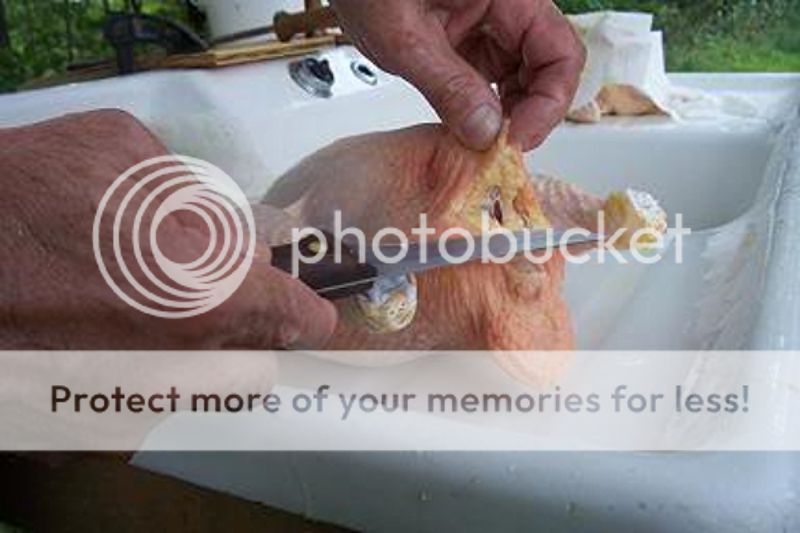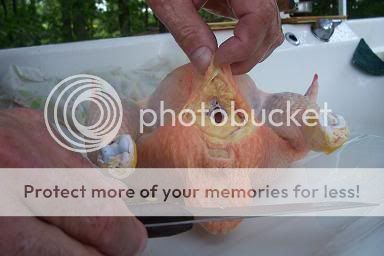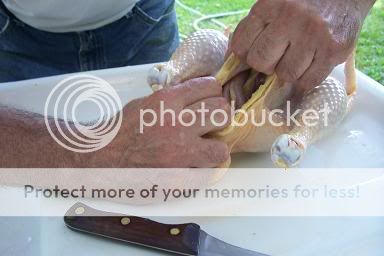WOW!! this was great, i have a rooster in a suburban house, and well, as you can guess, the neighbours have complained. I have had him since he was 3 weeks old, so dont want to really get rid of him, but the noise is preventing me from keeping him now. I decided, i may as well (since having spent money on food and upkeep and time) to eat him. And this is really great advice.
On a few points though, If i dont have a 'cutting cone' thingo. is it really all that important? and as far as most of the prep, as far as plucking prepareing goes,IS it almost similar to gutting/preparing fish? or is there something that oyu have to do (due to it being poultry)? I eat a lot of 'fresh' meat per say, but am jsut being cautious due to the poultry factor.
Thanks though for a great and detailed system
I don't have a cone. I tie their feet and hang them from a strong branch off a cherry tree in my backyard. I hold them on their back in my arms until they're relaxed, tie their feet then slowly lower my arms until they are hanging. They will flap a few times after I cut their neck, but so far they haven't broken any wings against the tree trunk.
I saw someone else on BYC used a flowerpot as a cone.
Good luck.
The last time I processed my big year and a half old rooster, I tried using a killing cone made from a gallon milk jug. I cut off the bottom and stuck it's head thru the pour hold and it worked fine. I have two cockerels I'm going to process this weekend (sons of the above mentioned roo) and I think I will use the milk jugs again.
CG










